ある晴れたゴールデンウィークのランチタイム…名古屋めしの中でも最上位に君臨する(と勝手に考えている)ひつまぶしを食べに、明治6年創業の名古屋の老舗料理店「あつた蓬莱軒(ほうらいけん)」を訪れたのですが…
あつた蓬莱軒|ひつまぶし発祥の店は名古屋で140年以上続く名店
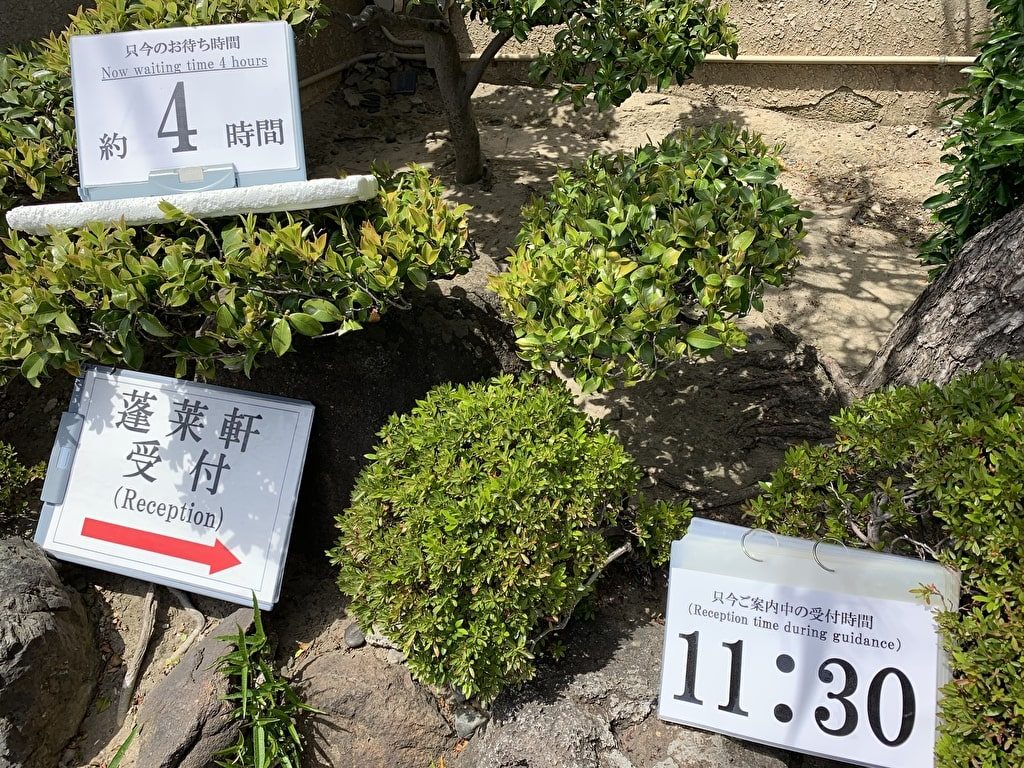
開店時間ちょうどにあつた蓬莱軒本店に到着すると、なんとこの時点ですでに待ち時間が4時間…いくら休日の昼とはいえ、こんな事があるんでしょうか?凄まじい人気ですね。さすがミシュランに掲載されるだけのことはあります(後で知ったのですが、開店前の10時半から受付を開始しているようです)。
入り口で店員さんが予約の受付をしているので、整理券をもらった後に近くで時間つぶしをして、午後3:30に出直すことにしました。そして…
周辺で時間つぶしをして、予約時間よりちょっと早めの3:10頃に到着。少し外で待って、時間ちょうどにかかった声を合図に入店します。ちなみに、この時点での混雑状況はこんな感じ…
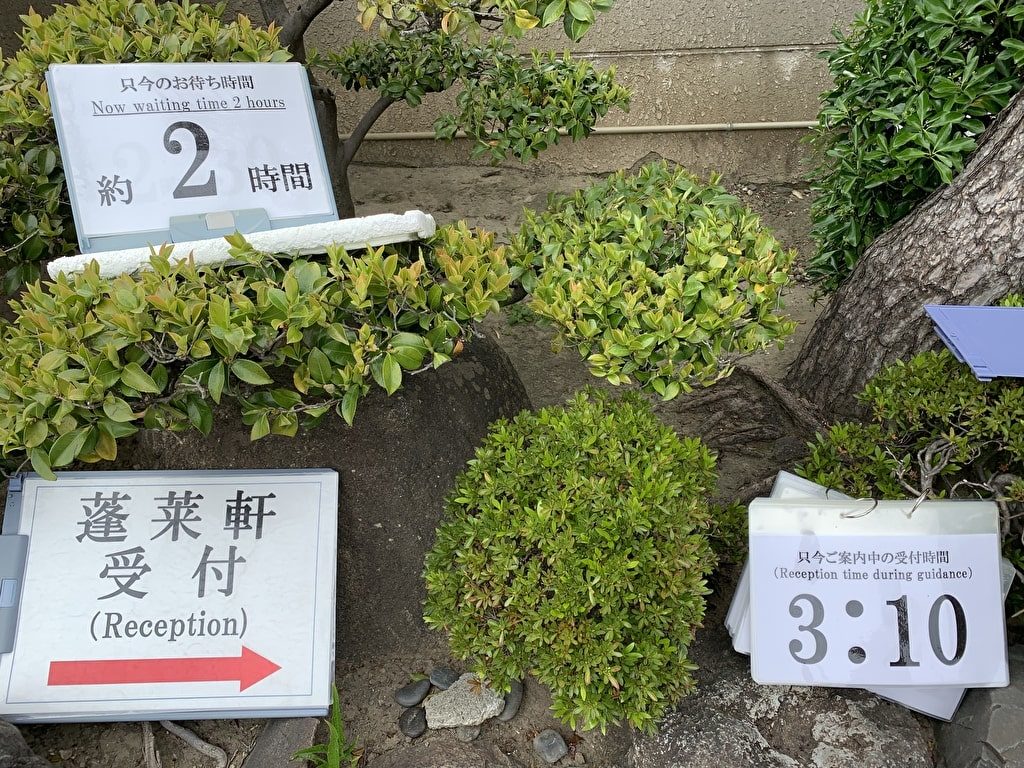
お店の外観はよくある古風な一軒家。しかし、ひつまぶしがヒットしてお客さんの増加とともに増築を重ねたのでしょう…ちょっと中は迷路っぽくなっています。店員さんに案内されて、一番奥にある比較的新しい洋間の客席に腰掛けます。注文はもちろんひつまぶし。うなぎの肝吸いは追加注文となりますので、そこはご注意ください。
あつた蓬莱軒のメニューと値段例(値段は税込)
- ひつまぶし 3900円
- 一半ひつまぶし 5500円(ごはん、うなぎともに大盛り)
- ごはん大盛り +200円
- 肝吸いへ変更 +250円
- 鰻骨せんべい 600円
- うまき 990円
- うざく 990円
- 鰻丼 並2650円、上3280円、特上4350円
- うまき定食(うまきと小ひつまぶし) 3150円
- 天麩羅定食 2900円
明治時代から続く伝統のスタイル…名古屋名物ひつまぶしの原点がここにあり
まずは目の前に運ばれた、あつた蓬莱軒のひつまぶしをご覧ください…
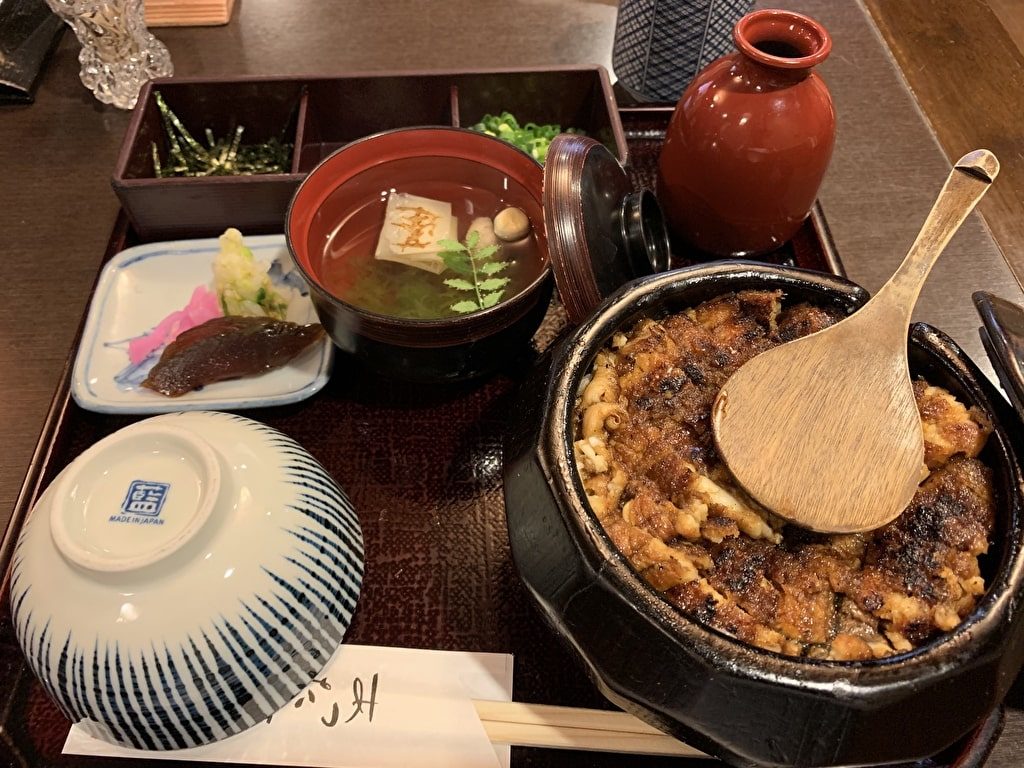
お盆の右下から、木の器に入ったごはんの表面をビッシリと覆ううなぎ…画像だと分かりにくいですが、この器に左の茶碗4杯分のボリュームがあります。その上の赤い徳利の中は、お茶漬け用の鰹出汁。薬味は刻みネギとわさび、海苔の3種類。中央のお吸い物は、うなぎの肝吸いに変更してもらいました。
普段あまり気にしないところだと思いますが、「ひつまぶし」はいわゆるうな重・うな丼と細かいところで違いがあります。まずは木でできたおひつ。これは出前で器が割れてしまわないように考え出されたものだとか。明治時代に考案された器が、150年近く経った今になってもずっと大切に使われています。
そして、細かく千切り状にカットされたうなぎも「ひつまぶし」独特の工夫の1つ。ガブリと噛みつけるほどの大きな切り身がうな重の大きな魅力ですが、その後に残ったご飯を見ると寂しさと後悔がじわじわ押し寄せて来ませんか?
ひつまぶしの場合、うなぎが細かくカットされているので、ご飯とうなぎをバランス良く食べられるというメリットがあります。ご飯をかき混ぜて混ぜご飯風にしたり、お茶漬けにして楽しんだり…というスタイルは、100年以上も続いた昔の人の知恵あってのものだったんですね。
ひつまぶしのおすすめの食べ方は、まず3種類の味を楽しんで…
こうして長い間かけて確立された、ひつまぶしのおすすめの食べ方…まずは、おひつのご飯をしゃもじで4等分して、1杯目を茶碗に移します…

まずはこのまま、純粋にうなぎの味を楽しみます。ふわっと焼きあがった身の表面に焦げ目があり、口から鼻にかけて香ばしさが広がっていきます。一方、タレは想像していたよりも薄味で、焦げ目の香ばしさが前面に出てくる中で存在を隠しているかのような印象も受けました。
続いて2杯目。ご飯とうなぎの上に薬味をちらしていただきます…
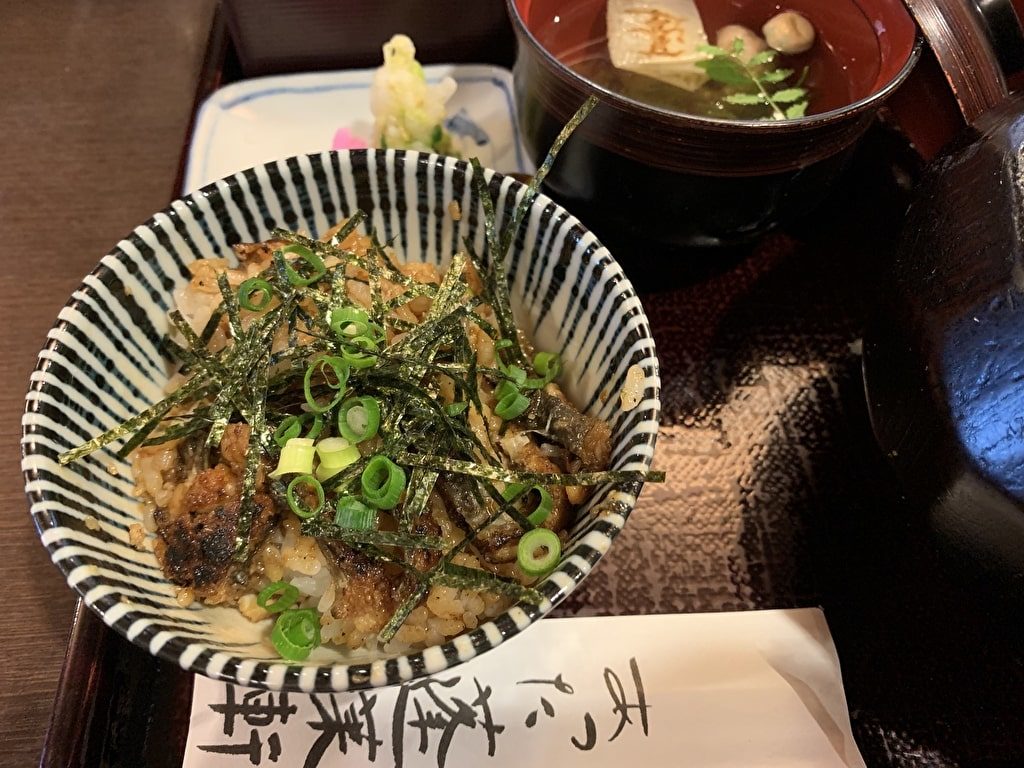
うなぎの香ばしさに加えて、刻み海苔のパリッとした食感が加わります。そしてちょっと意外だったのですが、薬味を加えることでタレの上品な香りと甘さが引き立つようになりました。
そして3杯目。鰹出汁をかけてお茶漬けにしていただきます…
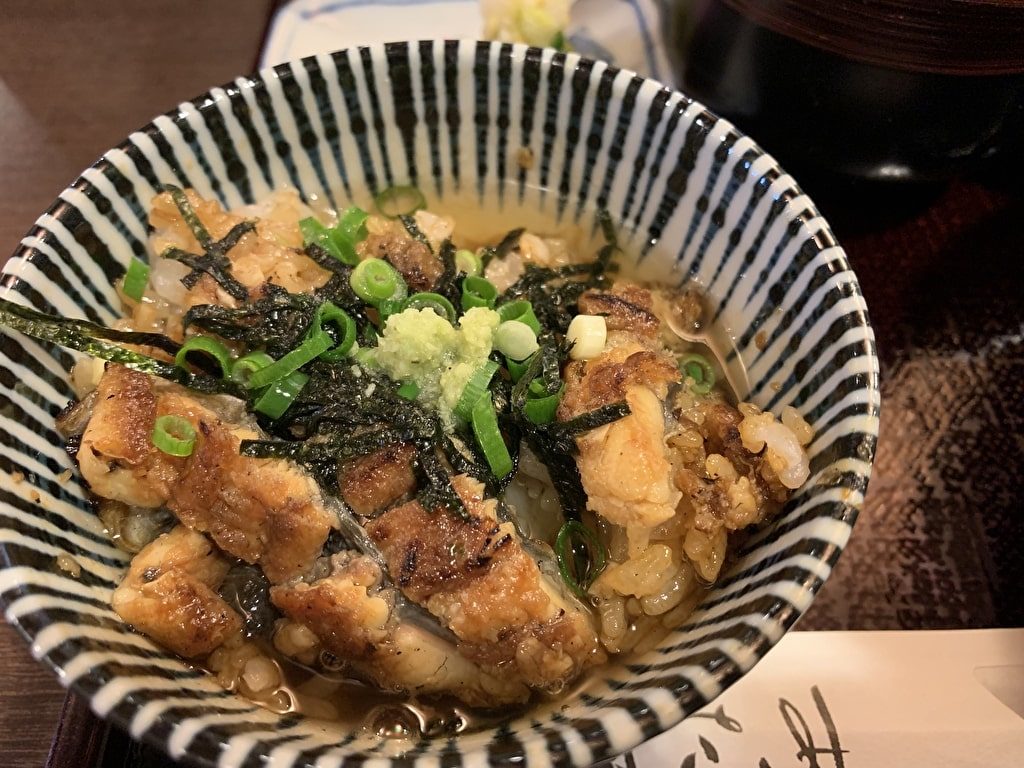
先程の薬味を同じように散らして、出汁を茶碗に流し込みます。タレが出汁に溶け出して極上のスープになり、ご飯は一粒一粒ほぐれてサラサラと清流のように口からのどへと流れていきます。
最後の4杯目はどうするか?というと…これまでの3種類で一番気に入った食べ方で、もう一杯食べるのです。なるほど、そういうことなのですね。粋な食べ方だなぁ…と感じました。で、最後に僕が選んだのは…
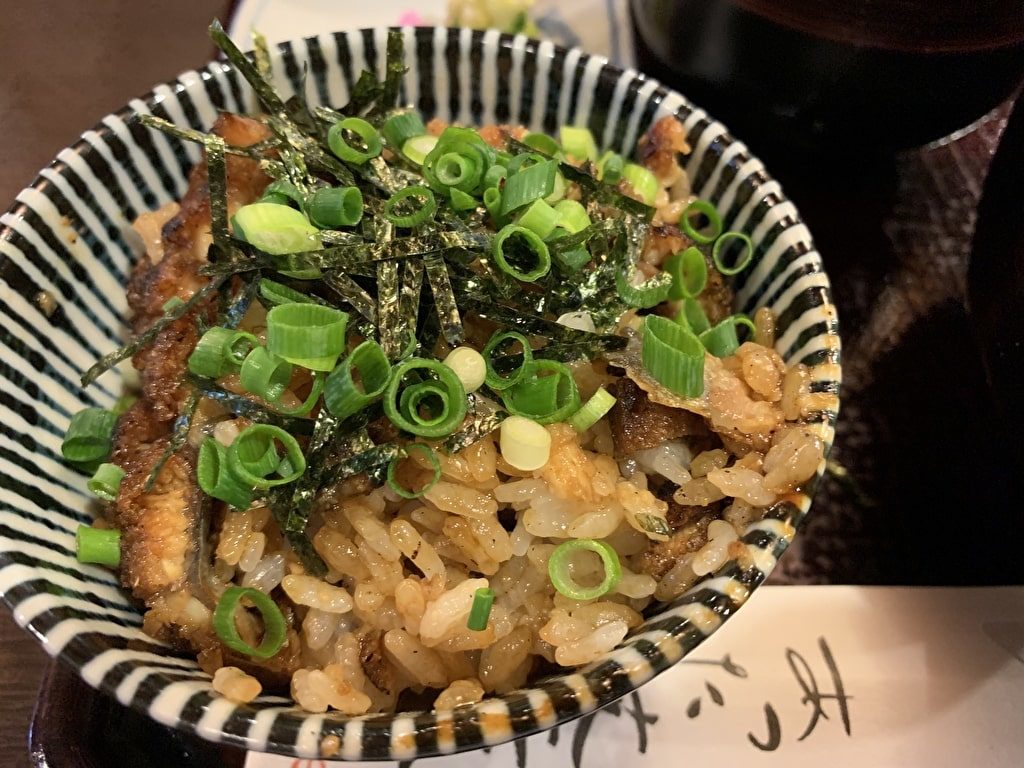
2杯目の、薬味を加えて食べるバージョン。そのままもお茶漬けも美味でしたが、創業から100年以上継ぎ足してきた秘伝のタレの味を、もう一度味わいたかったからです。
最後の1杯を食べ始めると、先程の感覚が偶然ではなかったことを確認できました。口の中で、秘伝のタレの優しい甘さがふわーっと広がっていくんです。伝統の力、恐るべし。最後の1杯のために、ご飯多めに残しておいてよかったぁ〜。
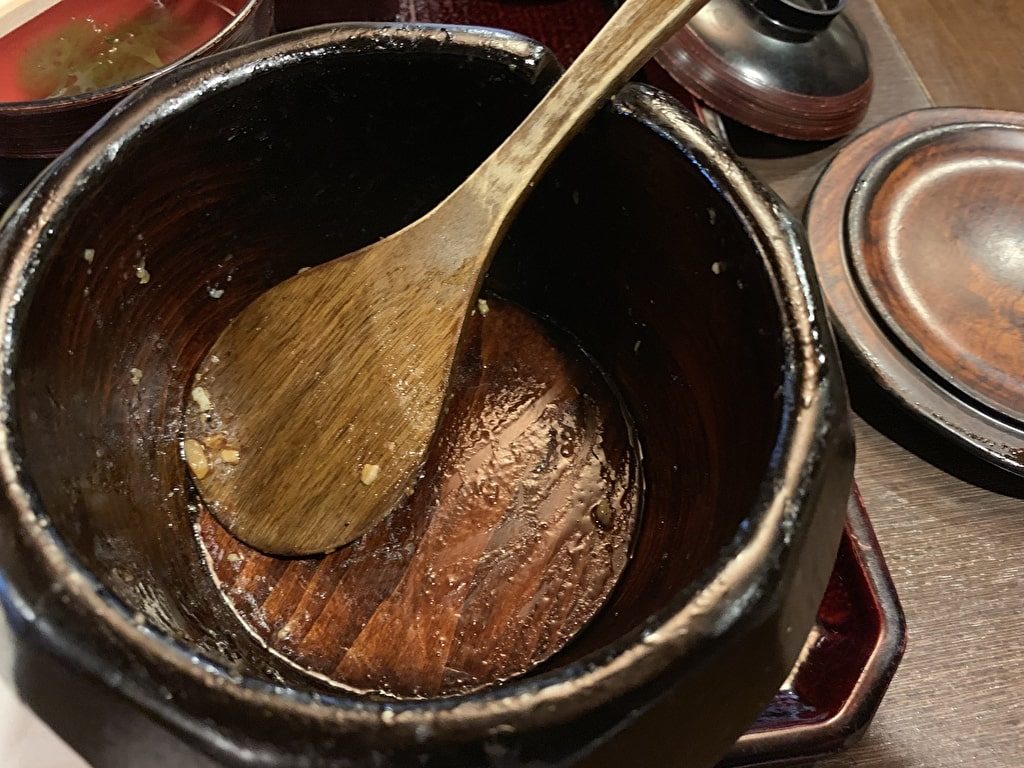
ちなみに、完食した後の木製おひつはこんな感じ。内面全体にうなぎの脂がテカテカ光っています。うなぎも相当脂の乗った上等のものだったんでしょうね。
本店以外に名古屋市内に3店舗…あつた蓬莱軒 本店へのアクセスは、最寄り駅の名古屋市営地下鉄名城線伝馬町駅下車徒歩7分
そんなあつた蓬莱軒は、今回ご紹介した本店の他に名古屋市内で3店舗の支店を構えます。熱田神宮すぐ近くの神宮店、栄の松坂屋内に2店舗(うち1店舗はお持ち帰り専門店)。これらのお店の近くに行くことがあったら、ぜひひつまぶし発祥の店の味を試してみてください。せっかく名古屋でひつまぶしを食べるのであれば、一度は元祖の店に行かないと…ですよね?
それでは、お店の詳細です。店舗データはこちら…
P.S. ひつまぶし完食の後は、このお店でデザートはいかがですか?

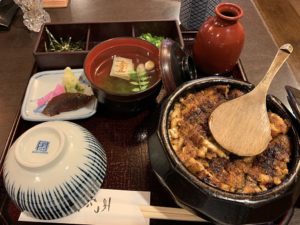
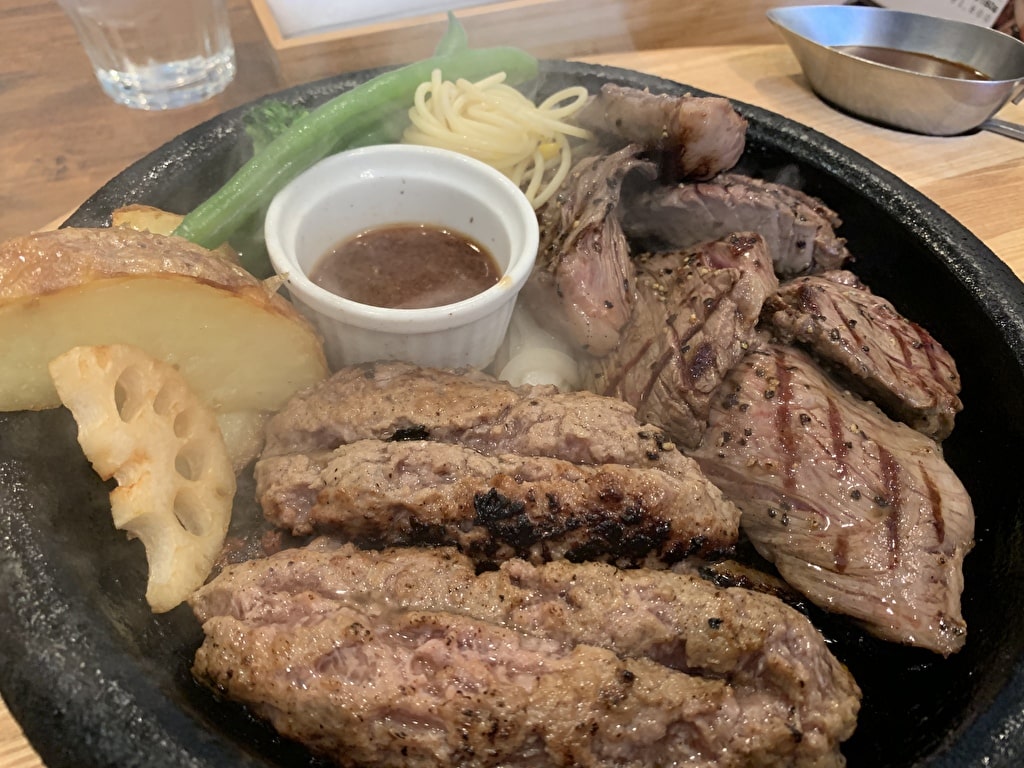 グリルアラベル名古屋分店|国産黒毛和牛にこだわる横浜発ハンバーグ有名店
グリルアラベル名古屋分店|国産黒毛和牛にこだわる横浜発ハンバーグ有名店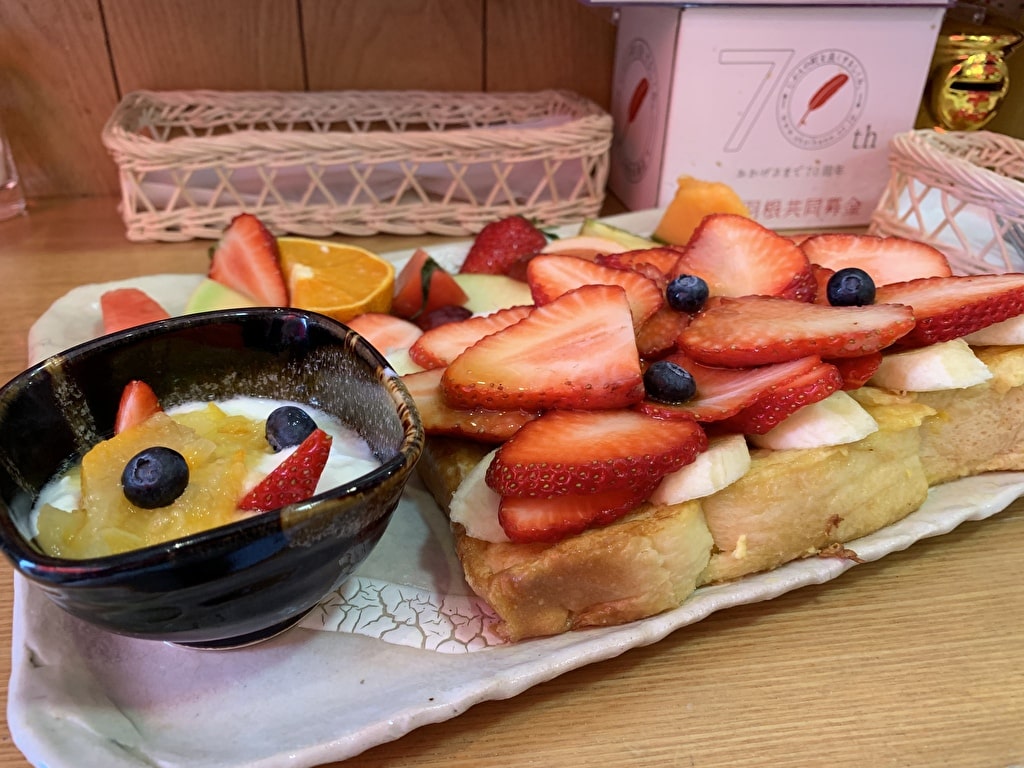
コメントを残す